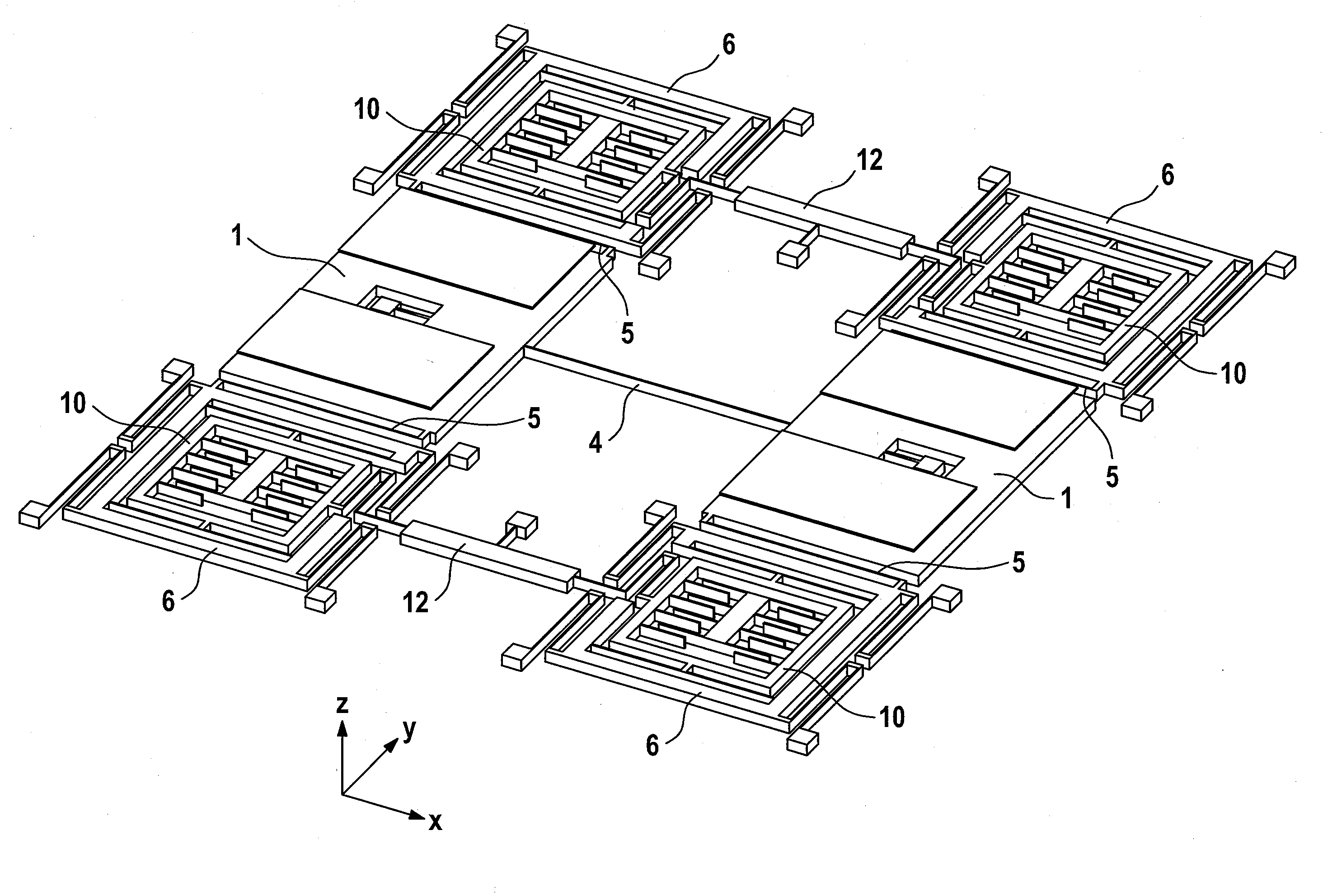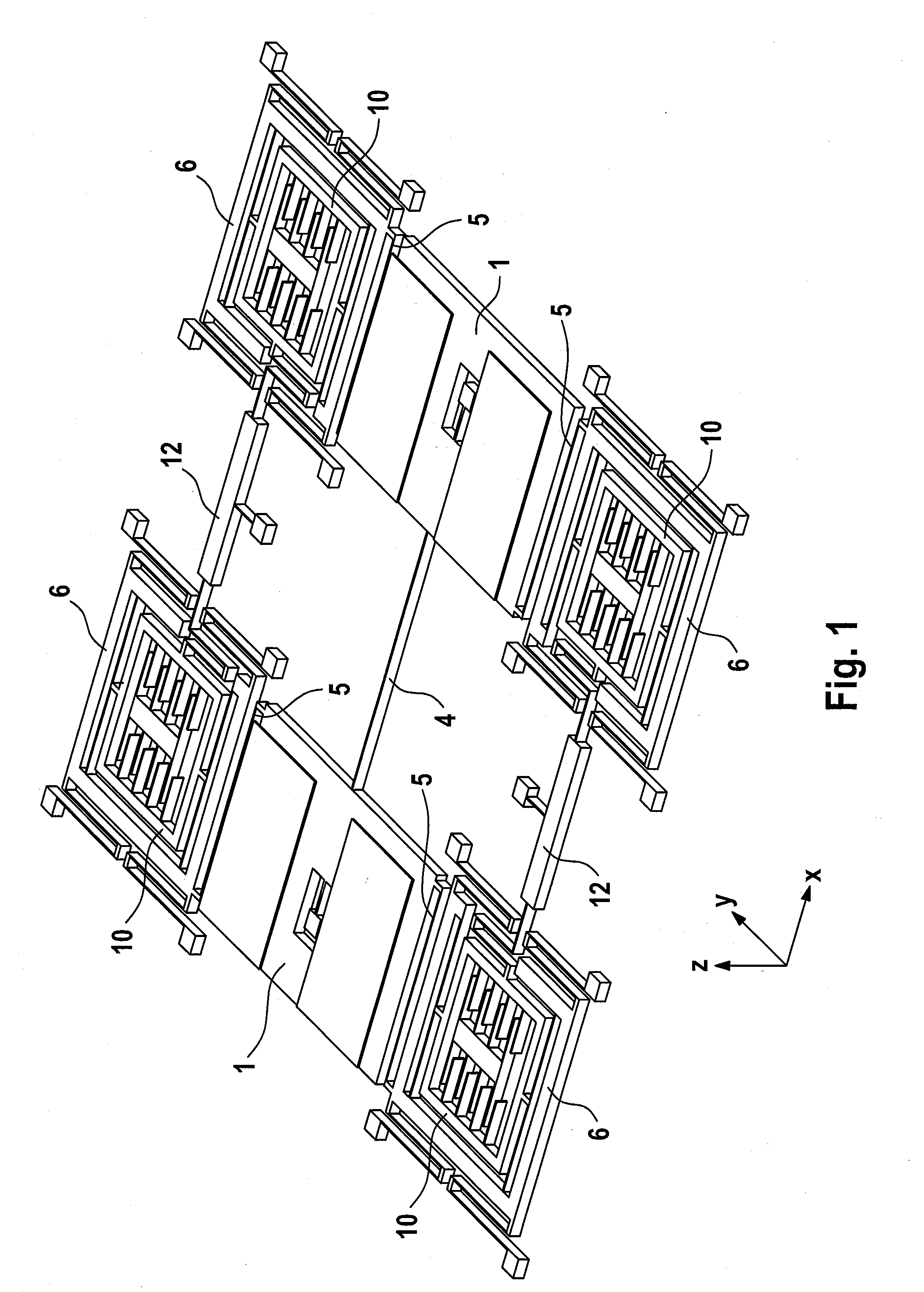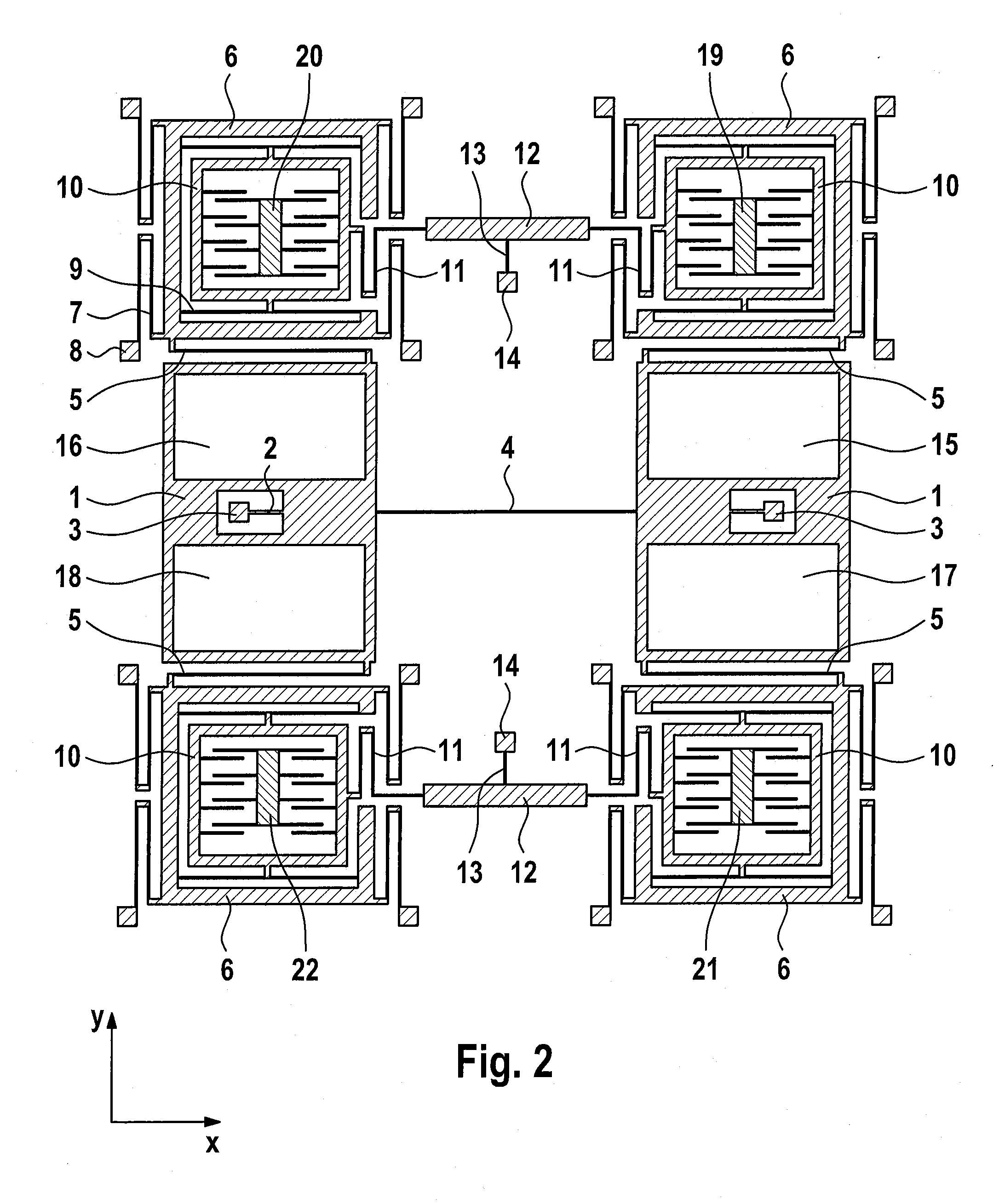Double-axle, shock-resistant rotation rate sensor with linear and rotary seismic elements
a rotation rate sensor and linear and rotary technology, applied in the direction of acceleration measurement using interia forces, turn-sensitive devices, instruments, etc., can solve the problems of insensitive design, inability to directly excite linear excitations or external rotational excitations, and save control-system complexity, so as to save space, save asic area and current draw or power consumption, and save cost-effective signal processing
- Summary
- Abstract
- Description
- Claims
- Application Information
AI Technical Summary
Benefits of technology
Problems solved by technology
Method used
Image
Examples
Embodiment Construction
[0044]FIG. 1 and FIG. 2 show an example of a rotation rate sensor which can detect both rotational speeds about the z axis, as the second sensitive axis, and about the y axis, as the first sensitive axis. The sensor consists of two masses 1, as the first and second seismic masses which are connected to anchors 3 and to one another via spring elements 2, 4 such that they can carry out rotational movements about the z axis, with the first and second seismic masses 1 moving in antiphase during the course of the drive mode, drive oscillation or primary mode, see FIG. 3 and FIG. 4. The suspension of the first and second seismic masses 1 furthermore allows rotational movements about the x axis, with the coupling spring 4 also providing coupling between the two masses 1 in this oscillation. There is therefore a mode, as the first read mode, in which seismic masses 1 oscillate in antiphase, or in the opposite direction, about the y axis, see FIG. 6. Apart from mutually antiphase rotations a...
PUM
 Login to View More
Login to View More Abstract
Description
Claims
Application Information
 Login to View More
Login to View More - R&D
- Intellectual Property
- Life Sciences
- Materials
- Tech Scout
- Unparalleled Data Quality
- Higher Quality Content
- 60% Fewer Hallucinations
Browse by: Latest US Patents, China's latest patents, Technical Efficacy Thesaurus, Application Domain, Technology Topic, Popular Technical Reports.
© 2025 PatSnap. All rights reserved.Legal|Privacy policy|Modern Slavery Act Transparency Statement|Sitemap|About US| Contact US: help@patsnap.com



